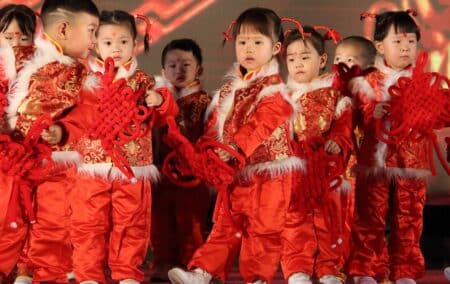Chinese couples will now be allowed to have three children. This follows the scrapping of the one-child policy in 2016, after which couples were allowed to have two children.
The decision to allow people to have three children comes as data shows a steep decline in the Chinese birth rate, with serious implications for the country’s future.
The latest census has shown that China’s working-age population (defined as those aged between 16 and 59) has declined by 40 million in the past decade. And on current trends, China’s population would shrink by nearly 30%, to a billion, by the end of the century.
This would have serious policy implications: a shrinking working-age population, and a reduction in the number of people available for military service.
Despite the relaxation of the one-child policy in 2016, there was no corresponding increase in the Chinese birth rate – in fact it continued to decline. It is believed that the continued decline in the birth rate is the result of two key factors; the costs of raising children, especially in cities, and the fact that a growing number of women – who have either entered the workforce or are pursuing their education – are delaying starting a family. Many couples who choose to be parents would rather only have one child, so as to give it as many advantages as possible.
A sustained decline in the Chinese population could also have implications for the rest of the world, as economic growth in China has seen the demand for many raw materials and goods rise, often boosting economies in other parts of the world.

